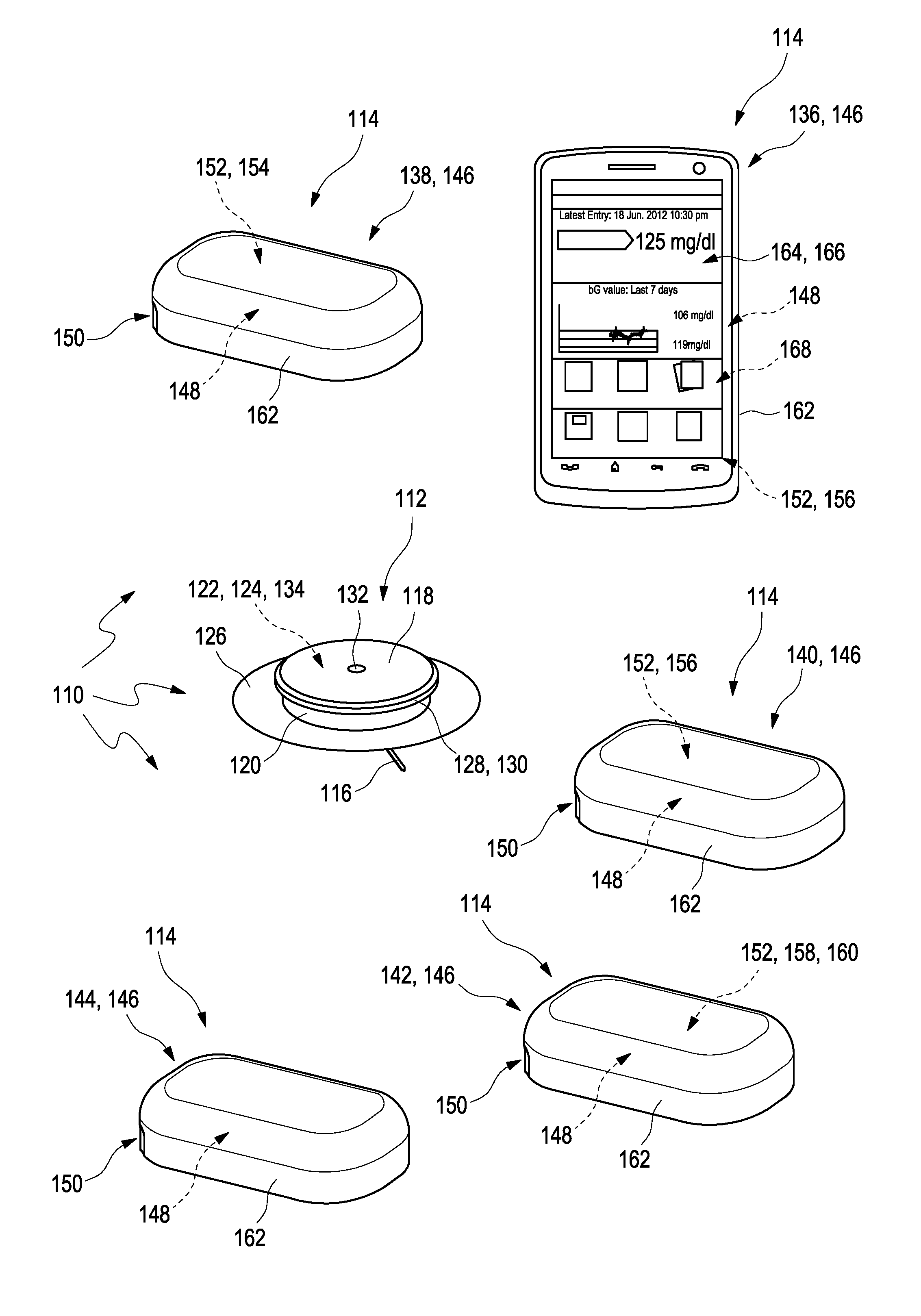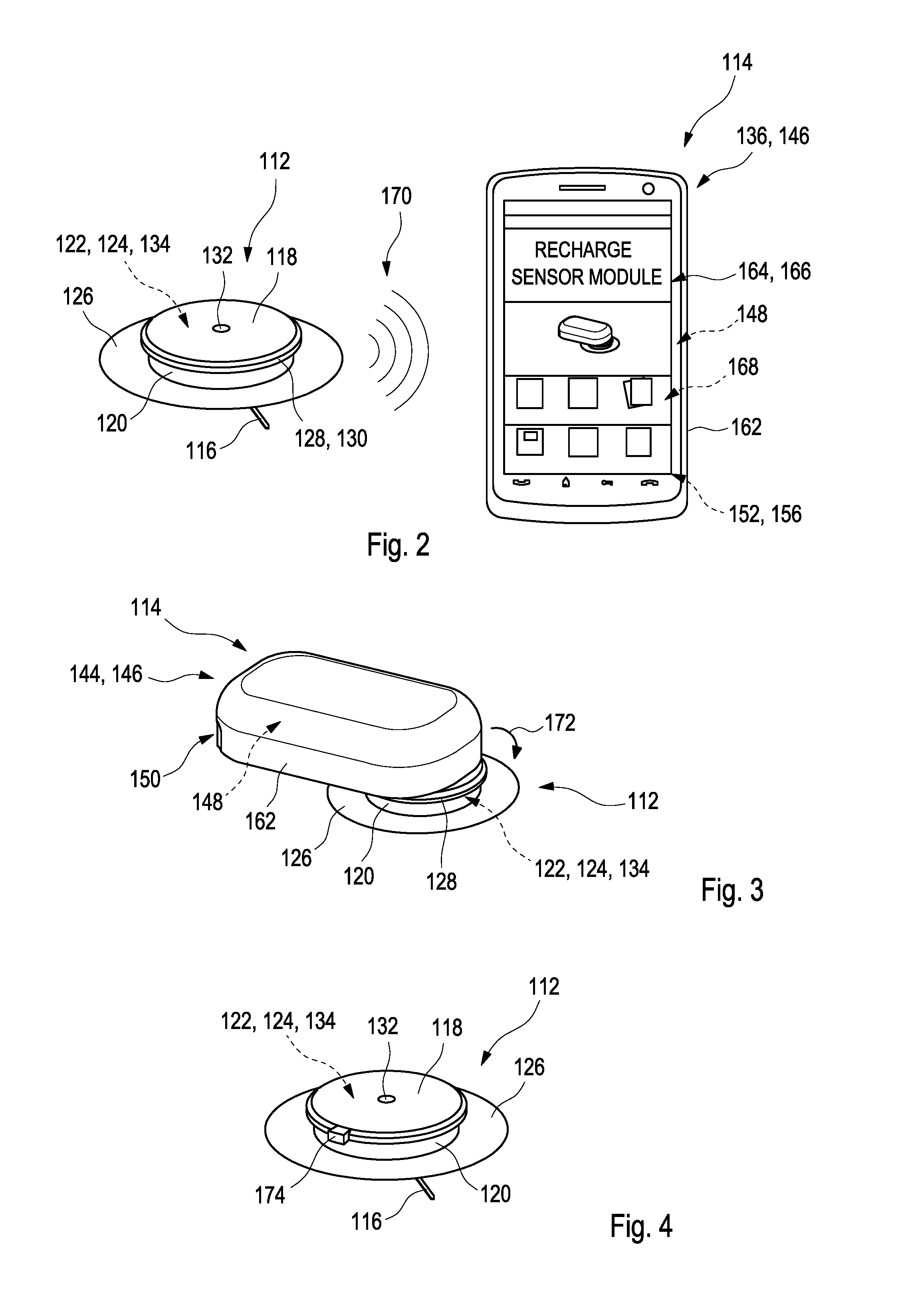Sensor module and kit for determining an analyte concentration
a technology of analyte concentration and sensor module, which is applied in the field of sensor module and kit for determining analyte concentration, can solve the problems of reducing affecting the sensitivity of the sensor, and implying a large number of technical challenges in the system, so as to increase the flexibility of the sensor module
- Summary
- Abstract
- Description
- Claims
- Application Information
AI Technical Summary
Benefits of technology
Problems solved by technology
Method used
Image
Examples
Embodiment Construction
[0148]In FIG. 1, an exemplary embodiment of a kit 110 for determining a concentration of at least one analyte in a body fluid is disclosed. The kit comprises at least one sensor module 112 and at least one further module 114. In this exemplary embodiment of the kit 110, five optional types of further modules 114 are depicted which will be explained in further detail below. It shall be noted that, however, an arbitrary combination of the at least one sensor module 112 and one or more of the further modules 114 as depicted in FIG. 1 is also feasible.
[0149]The sensor module 112 comprises at least one sensor element 116 adapted to be at least partially implanted into a body tissue of the user. For exemplary embodiments of the sensor element 116, reference may be made to one or more of the prior art documents listed above. Thus, as an example, the sensor element 116 may be or may comprise at least one electrochemical sensor element, having at least one working electrode and at least one ...
PUM
 Login to View More
Login to View More Abstract
Description
Claims
Application Information
 Login to View More
Login to View More - R&D
- Intellectual Property
- Life Sciences
- Materials
- Tech Scout
- Unparalleled Data Quality
- Higher Quality Content
- 60% Fewer Hallucinations
Browse by: Latest US Patents, China's latest patents, Technical Efficacy Thesaurus, Application Domain, Technology Topic, Popular Technical Reports.
© 2025 PatSnap. All rights reserved.Legal|Privacy policy|Modern Slavery Act Transparency Statement|Sitemap|About US| Contact US: help@patsnap.com



